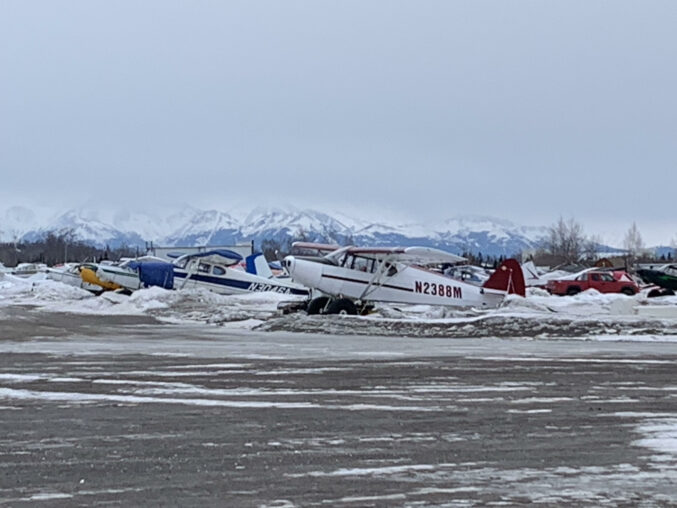My experience with the Iditarod as Teacher on the Trail has put me up close and personal with a facet of the race that people might not think about much: the Iditarod Air Force (IAF). This is why I wanted to highlight the IAF in my March lesson. The race would not be possible without the effort and dedication of volunteer pilots who spend thousands of dollars and hours to help supply race needs. The Iditarod Air Force is a term given to a group of pilots who work for the Iditarod. Many of the pilots are commercial pilots who are retired or take time off to fly for the race.
Why fly? Alaska is made up of vast stretches of boggy interior along the Iditarod Trail route. In the winter, the rivers are frozen, so boats aren’t an option. Interior villages are accessible by air, dog team and snowmachine, although distance limits the accessibility. Prior to aviation, the only access was by dogsled. Huge freight sleds traveled up and down the Iditarod Trail and other trails to carry supplies, food, and mining equipment to the interior and back to the coastal ports. With the advent of flight, aviation quickly became the primary means for travel and trade in Alaska. Pilots are referred to as “bush pilots” and they have a special set of skills as well as additions to their aircraft that enable them to land on snow, ice, and water.

Aircraft with skis for landing on snow. Photo: K. Newmyer
The IAF works tirelessly starting about three weeks before the race begins, flying supplies, food, straw, drop bags, and Heet (the fuel that mushers use to boil water for thawing dog food) to all the checkpoints. They then fly all the missions to hubs and checkpoints along the trail as the race progresses. As the race moves to the finish line, checkpoints are closed out and the pilots fly trash, mushers’ return items, people, and equipment back to Anchorage.

Aircraft parked in Anchorage. Photo: K. Newmyer
In my time on the trail so far, I have flown with many amazing, friendly, Iditarod Air Force pilots. All of them are willing to answer questions, share insight from their years of flying for the Iditarod, and tell stories about dogs, people, and places they have flown. The aircraft they fly are stable, reliable workhorses like Cessnas. To fly between checkpoints on the Iditarod trail is similar to how most people drive thirty minutes to Costco and bring boxes of supplies and food home. It’s the same process, just a different form of transportation.

Flying at 1200 feet. Photo: K. Newmyer
In this lesson I want to highlight two processes that are related to Iditarod aviation: first, designing, building, and testing the types of aircraft used to support the sled dog race, and second, the logistics that go into providing support along the trail by air. Students will get a glimpse into the world of the Iditarod Air Force through understanding the types of aircraft they fly. Students will also experience how much work it takes to get extra materials to the checkpoints—not just for the mushers, but also for all the volunteers. They will act as logistics coordinators to make sure the necessary people, supplies, and dogs get where they are needed.
I hope you enjoy this lesson as much as I have enjoyed writing it! Email me with feedback at emailtheteacher@iditarod.com.


